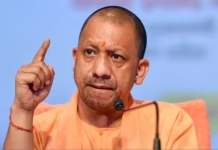The launch of ChatGPT’s image generation feature has sparked a creative revolution, opening new doors for digital artists, marketers, and content creators. Initially available only to paid subscribers, OpenAI has now rolled out this feature to free users, leading to a massive surge in interest and user adoption. With this tool, users can generate stunning, high-quality images, including popular styles like Studio Ghibli, without needing professional skills or expensive software. But what does this mean for the future of digital creativity? In this article, we will explore the transformative impact of ChatGPT’s image generation capabilities, its features, and how it’s changing the way we create and consume visual content.
In This Article:
The Growing Popularity of AI-Generated Images
ChatGPT’s image generation has quickly gone viral, particularly after the release of Studio Ghibli-style images. This feature allows users to generate custom images based on text prompts, turning their ideas into visual masterpieces. The ability to generate high-quality images on demand has made this tool a game-changer for industries that rely heavily on visual content, such as advertising, marketing, and social media.
The viral trend surrounding ChatGPT’s Ghibli-style images has attracted a massive number of users—one million users within just an hour of the rollout, according to OpenAI CEO Sam Altman. The tool is now accessible to free users, although there are some limitations, including a cap of three images per day. Despite these restrictions, the demand for the feature is overwhelming, showing the powerful potential of AI in digital creativity.
How ChatGPT’s Image Generation Works
The key to ChatGPT’s success lies in its ability to convert text into images. By using advanced machine learning models, ChatGPT is trained to interpret natural language prompts and generate images that closely match the description. Whether you’re looking to create a scenic landscape, a futuristic cityscape, or even abstract art, the platform can produce a wide range of visual styles with ease.
The image generation tool is based on Generative Adversarial Networks (GANs) and other cutting-edge AI algorithms. These technologies enable ChatGPT to understand context, color palettes, shapes, and artistic styles. As a result, users can create images that reflect their unique ideas and personal vision. It’s a tool that allows both professionals and hobbyists to push the boundaries of their creativity.
Applications of ChatGPT’s Image Generation Feature
- Marketing and Advertising
In the marketing world, visuals are paramount. ChatGPT’s image generation can help businesses produce creative assets quickly, without relying on expensive designers or stock images. Marketers can create tailored images for campaigns, social media posts, and advertisements, ensuring their content stands out in a crowded digital space. - Content Creation for Social Media
Social media influencers and content creators are always looking for ways to differentiate themselves. With ChatGPT’s image generation, they can generate unique images for posts, thumbnails, and banners. The ability to create custom visuals on the fly allows creators to maintain a fresh and dynamic online presence, which is essential for engagement and growth. - Education and Learning
Teachers and educators can also benefit from ChatGPT’s image generation. Visual aids, diagrams, and illustrations are essential for teaching complex concepts. With the AI-powered image generation tool, educators can create tailored visuals that help explain difficult subjects, making learning more interactive and engaging. - Personal Projects and Art
For digital artists and hobbyists, ChatGPT offers an easy way to bring their ideas to life. Whether it’s creating a fictional character, designing a new product, or visualizing a dream, the platform provides a low-cost, high-quality solution for personal art projects.
Limitations and Challenges
Despite the immense potential, there are limitations to ChatGPT’s image generation tool. One major challenge is the restriction on the number of images free users can generate daily. The popularity of the feature has led to some issues with overloading OpenAI’s GPUs, prompting them to introduce rate limits. This is an issue that OpenAI is actively working on, with the aim of making the feature more efficient and scalable in the future.
Another challenge is the need for better understanding of user prompts. While the AI is impressive, it sometimes produces results that are not aligned with the user’s original vision. However, as OpenAI continues to refine its models, we can expect these issues to be resolved, making the tool even more effective.
The Future of AI-Generated Imagery
The future of AI-generated imagery looks promising, with more sophisticated features and applications expected to emerge. As the technology evolves, it is likely that we will see even more advanced tools that allow users to create not just images but also videos, animations, and interactive media. This could transform the way industries approach content creation, providing a new level of customization and personalization.
As AI continues to advance, digital creativity will be democratized. Tools like ChatGPT’s image generation feature are making high-quality visual content more accessible than ever, allowing anyone with an idea to turn it into a visual reality.
ChatGPT’s image generation feature has opened up new possibilities for digital creativity. With its ability to generate high-quality, customized images, it is revolutionizing the way we approach content creation in marketing, art, education, and beyond. While there are some challenges and limitations, the potential of AI in this space is immense. As the technology continues to evolve, we can expect even more innovative applications that will shape the future of digital content creation.
By – Jyothi




